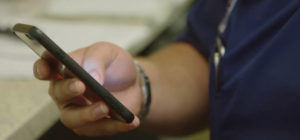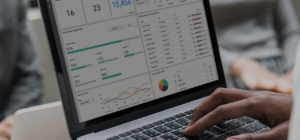As much as having a mobile device saves time and resources for healthcare workflows, desktop computers still play an integral role in clinical communication and collaboration (CC&C).
That’s why having a powerful desktop application that goes along with a powerful mobile app can make all the difference in enabling multidisciplinary collaboration, especially among users who don’t or can’t carry a smartphone as they go about their day.
To meet those needs, we created the all-new 19.3 MH-CURE® Desktop. With an easy-to-navigate interface and features bar that’s packed with tools you know and love from the mobile app, the Desktop App is the perfect way to include even more users in your communication network. (The more, the exponentially better.)
What’s in the Newest Desktop Release?
Users logged into MH-CURE Desktop can expect an experience that facilitates messaging, broadcasts, patient lookup, contact search and more. With capabilities responsive and compatible with screens large and small, MH-CURE streamlines communication for any and every role in the hospital, thanks to these core functions:
- Messaging: View and send a private or group text message or broadcast to any contact in the system, with the ability to select from prewritten “Quick Pick” messages to save time. Mark any text as urgent if you need to.
- Patient Lookup: Check your assigned patients, assign and unassign patients to yourself and view all patients in your assigned units.
- Contacts and User Status: View and search for contacts in your assigned units, a specific unit or across the whole hospital or health system. Change your status to available or busy, or check the status of someone else.
- Dynamic Role and Assigned Units: Assign and unassign Dynamic Roles and units.
- Lock and Log Out: If you need to step away from the computer, the lock button secures MH-CURE while you’re not using it to protect PHI. When you’re done with MH-CURE Desktop for the day, you can log out, which is useful on shared computers.
- Notifications: Get broadcast and text notifications on the Desktop App, just like you do with the mobile app. They’ll pop up on the computer screen, even if you have the app minimized to work on something else.
Best of all, users can switch between the desktop and mobile versions of MH-CURE throughout the day. Doing so is perfect for clinicians who use their mobile device during rounds or other rotational work, but also sit at a computer to complete patient notes and EHR data.
It’s the best of both worlds: Users can stay connected to the information network, no matter what they’re doing or which device they’re doing it on—chat is encrypted and uses TLS, HTTPS and SRTP protocols for enhanced back-end security and performance.
Who Needs It?
Who exactly benefits from MH-CURE Desktop? Anyone who uses smartphones and computers will benefit from the flexibility of choice, but based on real-life insights from our health system customers, these five types of users stand to gain the most from a workstation-based communication option:
- Ancillary Staff: Ancillary staff who work mostly on computers, like those in the pharmacy or in non-clinical operational roles, derive high value from MH-CURE Desktop. With it, they can keep operating as part of the system’s communication network from a central desktop command center where their usual tools, calendars and programs appear alongside MH-CURE.
- Outpatient Clinics: In the clinic, clinicians may find a desktop communication solution helpful so that they can collaborate with others without the need to hunch down over a smartphone—especially while seeing patients and/or entering notes into the EHR. As a bonus, removing those barriers and friction points could even help boost adoption of the tool overall.
- Radiology: In areas with lined walls, desktop programs are essential—and one of the only—communication tools that providers can use without risk of interference with medical devices or lack of cell service. With MH-CURE Desktop, users in the radiology unit can actively collaborate with the rest of the hospital just as well as anyone else.
- Unit Secretaries: With MH-CURE Desktop, admin support with stationary workstations can easily reach everyone from their computer. It’s an option that poses minimal disruption to their other daily duties, thanks to the benefit of faster communication from using a traditional desktop keyboard and improved productivity from minimizing and restoring MH-CURE Desktop along with other desktop apps and programs.
- WoW and CoW Users: For staff who stay attached to their workstation on wheels (WoW) or computer on wheels (CoW), the MH-CURE Desktop negates the need to toggle back and forth between a mobile device and a computer, a perk made all the more meaningful when providers are already at risk for loading their mobile workspace up with too many devices.
Of course, this list is just a guide—and you may have permanent or ad-hoc use cases outside of these listed here. For example, users who temporarily misplace their smartphone could log into a desktop to send a broadcast asking others to look for it. Or if a user’s phone runs out of battery, MH-CURE Desktop still allows them to communicate with others while their device charges.
At the end of the day, anyone who uses a computer for at least part of their job function will likely benefit from having the MH-CURE Desktop app. Want to quickly tap a text while on the go? Feel free! Want to thoughtfully type a longer message from a standard keyboard? Go for it!
After all, it’s all about options. With more of them, workflows can hum along as usual with minimal disruption, maximum productivity and a better patient experience to boot.





